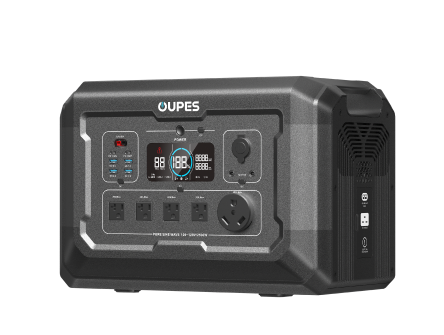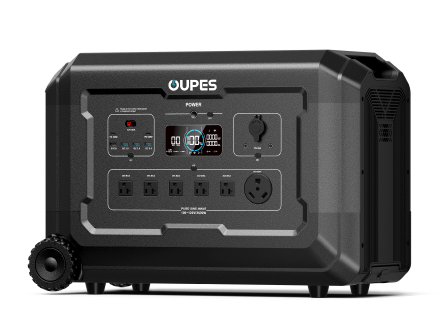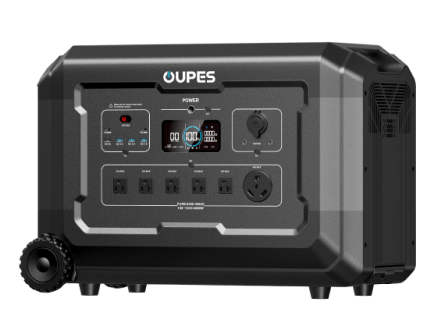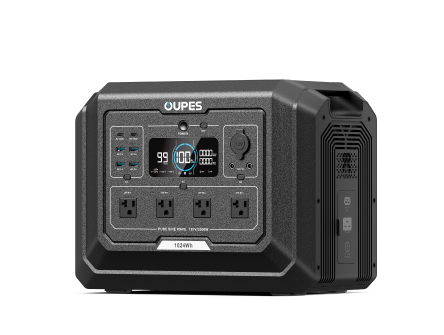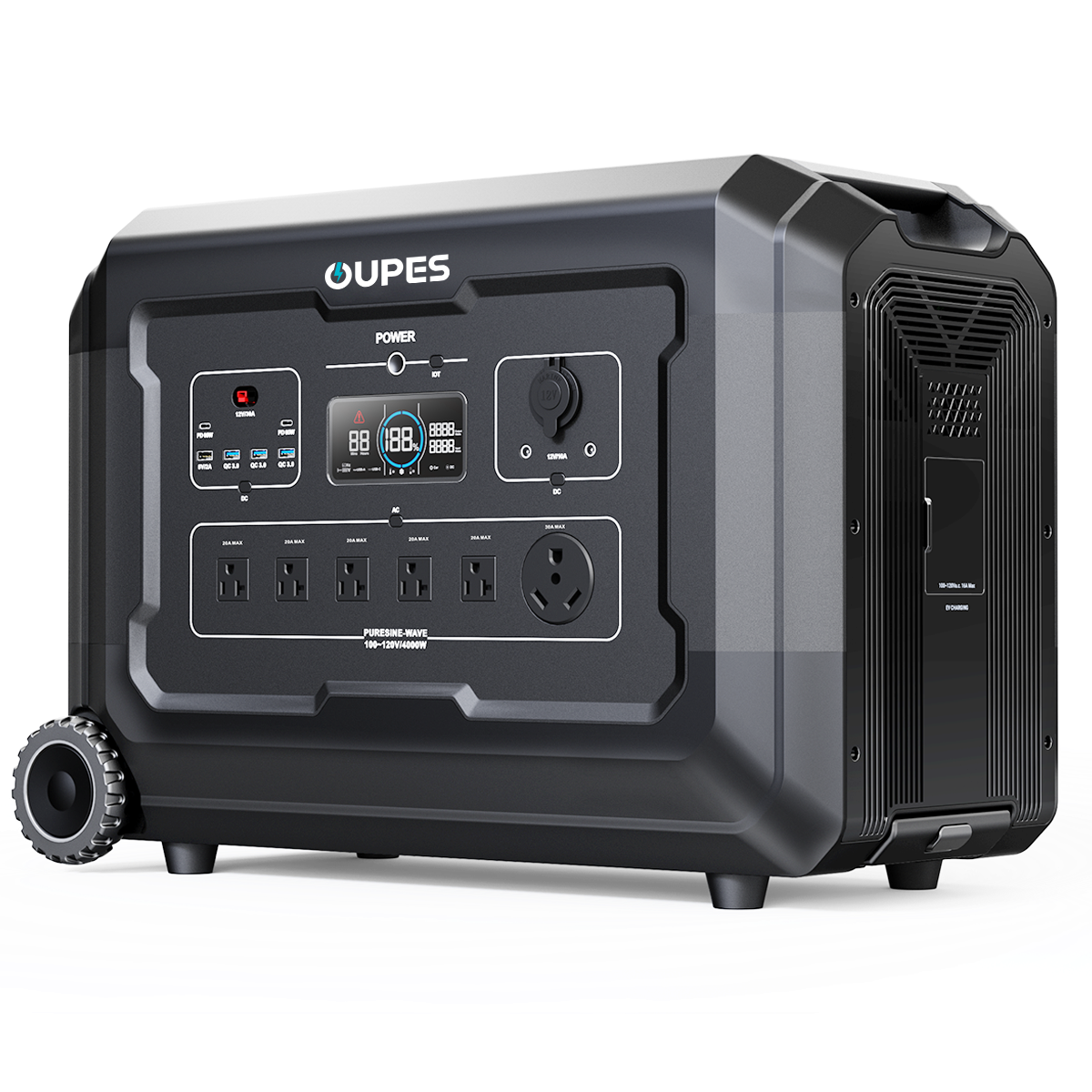
As hurricane season approaches, the need for a reliable power solution becomes more urgent. When the grid fails during severe storms, your access to lights, refrigeration, and communication can vanish instantly. A solar generator offers a clean, quiet, and dependable source of backup power when you need it most. But what makes a solar generator ideal for hurricane preparedness? Let’s explore.
This guide will walk you through the essential features to consider, how to use solar generators effectively during storms, and why OUPES solar generators stand out as an excellent choice for emergency readiness.
The Critical Role of Power During Hurricane Season
Hurricanes are notorious for knocking out power lines, flooding substations, and disrupting electricity across entire communities. When you're faced with days—or even weeks—without grid power, the absence of electricity can compromise your safety, comfort, and ability to communicate. From charging your phone to running essential appliances like medical devices, refrigerators, or fans, power plays a life-sustaining role during such emergencies.
A solar generator offers a dependable energy source that doesn’t rely on fossil fuels, making it particularly useful when gas stations are closed or fuel is in short supply. Unlike traditional gas-powered generators, solar generators are silent, produce no fumes, and require minimal maintenance, making them perfect for indoor use and residential neighborhoods where noise restrictions may apply.
During hurricane season, one of the biggest risks is the unpredictability of power outages. Investing in a solar generator allows families to be proactive, ensuring that critical devices remain powered, food stays preserved, and communications stay open. These units also prove invaluable in maintaining access to news updates, weather forecasts, and emergency alerts via radios or mobile devices.
Furthermore, solar generators can be paired with solar panels to harness free, renewable energy from the sun—an especially helpful advantage during prolonged outages when gasoline or propane may be unavailable. In short, a solar generator is more than just a convenience during storms—it’s a crucial tool for survival and peace of mind.
What to Look for in a Solar Generator for Hurricanes
When preparing for hurricane season, choosing the right solar generator is not just about power output—it's about reliability, durability, and compatibility with your essential devices. Several key features should guide your decision when shopping for a solar generator built for storm resilience.
First, consider the battery capacity and output power. During a power outage, you’ll want to run multiple devices simultaneously—such as a refrigerator, lights, phone charger, or even a CPAP machine. Look for generators with at least 1000Wh capacity and multiple output ports, including AC, DC, USB, and Type-C, to support a range of appliances.
Portability is another important factor. While large-capacity generators offer more backup time, they must still be easy to transport if you need to move them indoors during a storm. Wheels and ergonomic handles are key features that enhance usability and mobility.
Durability cannot be overlooked. Hurricanes bring moisture, humidity, and potentially harsh conditions, so opt for solar generators that are water-resistant or housed in weather-resistant enclosures. Protection systems against overcurrent, overheating, and short circuits are also essential to ensure long-term safety.
Fast charging capabilities and solar panel compatibility further extend your generator’s functionality. Some high-end models, like those from OUPES, include MPPT charge controllers for rapid solar recharging, ensuring you can replenish your power supply quickly even when the grid remains down for days.
Lastly, check for intuitive interfaces and app connectivity. When stress is high during a storm, you don’t want to wrestle with confusing controls. A user-friendly display panel or app-based monitoring helps you track power usage, input/output levels, and remaining battery life with ease.
Benefits of Using a Solar Generator Over Gas Alternatives
For many, the first thought during a power outage is to grab a gas generator—but solar generators offer significant advantages, especially during hurricane-related emergencies. The most obvious benefit is their independence from fuel supply chains. When storms disrupt transportation or fuel delivery, gas may become scarce or unavailable altogether.
Solar generators, in contrast, rely solely on sunlight—an endlessly renewable and free energy source. Even on cloudy days, solar panels can still collect and store energy, especially when paired with high-efficiency MPPT controllers found in systems like OUPES.
Another key benefit is safety. Gas generators emit carbon monoxide, a potentially deadly gas that makes them unsuitable for indoor use. Solar generators are emission-free, silent, and safe to operate inside homes, tents, or RVs. This makes them ideal for families, seniors, or individuals with respiratory concerns who need a quiet, non-toxic backup solution.
Maintenance is also significantly lower. Gas generators require oil changes, fuel stabilization, and periodic tune-ups to remain functional. Solar generators have few moving parts and don't need regular mechanical servicing, meaning they’re always ready to go when disaster strikes.
Lastly, solar generators contribute to environmental sustainability. Every time you charge your phone or keep your fridge running using solar energy instead of fossil fuels, you're reducing your carbon footprint. In a time when environmental disasters and energy insecurity are intertwined, choosing green technology is a step toward a more resilient future.
How to Use Your Solar Generator Effectively During a Storm
Owning a solar generator is only one part of the equation—knowing how to use it efficiently during a hurricane is just as critical. Start by creating an emergency power plan. Identify which appliances and devices are essential during an outage and calculate their wattage. This helps ensure you stay within your generator’s power budget and prioritize high-need items.
Position your solar panels wisely. If it’s safe to go outside, place panels in direct sunlight and tilt them for maximum exposure. Many modern systems, such as OUPES solar generators, allow parallel connections for faster charging. Use this to your advantage when brief sun periods appear between storm clouds.
Always keep your solar generator fully charged before a storm hits. In the days leading up to hurricane landfall, monitor the weather and make it a habit to top off your generator daily. If your unit supports car or wall charging, use every available method to keep the battery full.
Store your generator in a safe, dry place away from water intrusion. Even water-resistant models should be protected from flooding or heavy rainfall. Consider placing the generator on an elevated platform or shelf to avoid moisture damage.
Practice energy discipline during outages. Use energy-intensive devices only when necessary, and unplug appliances when not in use. LEDs and battery-powered fans are efficient alternatives that reduce the load on your generator. Most importantly, maintain a calm, methodical approach to power usage—you’ll stretch your supply further and keep critical systems running longer.
Why OUPES Solar Generators Are Ideal for Hurricane Preparedness
OUPES has become a trusted name in the world of solar generators, and for good reason. Designed for real-world emergencies, OUPES generators combine high capacity, safety, and portability into a robust backup power solution. These generators are particularly well-suited for hurricane preparedness thanks to their comprehensive safety features and long-lasting LiFePO4 batteries, which offer over 3500 life cycles for extended reliability.
OUPES generators feature high wattage outputs—some models offering 1800W or more—making them capable of powering large appliances like refrigerators, sump pumps, or microwave ovens. They also come with versatile output ports, including multiple AC outlets, USB-A/USB-C, and DC ports, enabling users to connect a variety of devices simultaneously without the need for extension strips or converters.
With smart app control, you can remotely monitor your power usage, charging progress, and battery status from your smartphone—an especially helpful feature when you want to conserve power or check conditions without opening doors during heavy winds. The built-in MPPT controller ensures fast and efficient solar charging, giving users the flexibility to recharge quickly in between storm bands.
Another advantage is their rugged construction. OUPES designs are tested to withstand harsh environmental conditions, and many models include reinforced corners, water-resistant housing, and intuitive controls that remain functional even under pressure.
Perhaps most importantly, OUPES generators are quiet and clean—ensuring your family stays safe, your neighbors stay undisturbed, and your power remains uninterrupted when the storm hits hardest. With options available for every home size and budget, OUPES offers peace of mind in the most unpredictable situations.
Preparedness is power. With the right solar generator, you can face hurricane season with confidence, knowing that your essential systems, devices, and loved ones will remain protected—even in the worst of storms.
As hurricanes become more frequent and more severe, relying solely on the traditional grid or gas-powered generators is no longer enough. Solar generators offer a forward-thinking, sustainable solution that keeps your household running even when disaster strikes. Quiet, clean, and easy to use, they provide the critical power support needed to navigate emergencies safely.
Whether you're stocking up supplies or building a complete storm readiness plan, don’t overlook the importance of backup power. A well-chosen solar generator—like those offered by OUPES—can be the difference between hardship and resilience. Invest in your safety this hurricane season and power through the storm with confidence.

